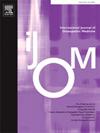Categorizing treatment mechanisms for Complementary and Integrative Musculoskeletal Interventions
IF 1.5
4区 医学
Q2 MEDICINE, GENERAL & INTERNAL
引用次数: 0
Abstract
Treatment mechanisms (TM) reflect the steps or processes through which a treatment unfolds. However, TM research faces challenges due to inconsistent terminology and varying measurement approaches for each mechanism, which creates confusion and controversy among clinicians and scientists. In this paper, we: 1) define key terms associated with TM, 2) provide recommended categories of study that reflect intervention domains, and 3) present examples of measures of TM within the defined categories. Our recommended definitions differentiate associated TM (a finding that occurs following administration of a treatment that may or may not influence outcomes) from causal TM (which directly affects the clinical outcome). When measuring causal TM, we recommend that researchers consider three potential categories of interventional domains: a) anatomical, b) psychological/cognitive and c) behavioral. Lastly, we argue that within each interventional domain, TM can be measured across a spectrum that includes physiological (e.g., brain activity, nerve activity, biomarkers, etc.) and functional (e.g., range of motion, stiffness, cognition measures, etc.) mechanisms. Measuring both physiological and functional mechanisms improves the likelihood of understanding the complexity of clinical recovery. Harmonizing TM terminology, categories, and measurements across a spectrum, while providing examples of each, may reduce confusion and assist researchers and funding sources in targeting specific mechanistic-related questions.
补充和综合肌肉骨骼干预的治疗机制分类
治疗机制(TM)反映了治疗展开的步骤或过程。然而,由于每种机制的术语不一致和测量方法不同,TM研究面临挑战,这在临床医生和科学家之间造成了混乱和争议。在本文中,我们:1)定义了与TM相关的关键术语,2)提供了反映干预领域的推荐研究类别,以及3)在定义的类别中提供了TM的测量示例。我们推荐的定义区分相关性TM(在给予治疗后发生的可能影响或不影响结果的发现)和因果性TM(直接影响临床结果)。在测量因果TM时,我们建议研究人员考虑三种潜在的干预领域:a)解剖学,b)心理/认知和c)行为。最后,我们认为在每个介入领域内,TM可以通过包括生理(如大脑活动、神经活动、生物标志物等)和功能(如活动范围、僵硬度、认知测量等)机制在内的频谱进行测量。测量生理和功能机制提高了理解临床恢复复杂性的可能性。协调TM的术语、类别和测量,同时提供每种术语的示例,可以减少混淆,并帮助研究人员和资金来源针对特定的机械相关问题。
本文章由计算机程序翻译,如有差异,请以英文原文为准。
求助全文
约1分钟内获得全文
求助全文
来源期刊
CiteScore
2.20
自引率
36.80%
发文量
42
审稿时长
3 months
期刊介绍:
The International Journal of Osteopathic Medicine is a peer-reviewed journal that provides for the publication of high quality research articles and review papers that are as broad as the many disciplines that influence and underpin the principles and practice of osteopathic medicine. Particular emphasis is given to basic science research, clinical epidemiology and health social science in relation to osteopathy and neuromusculoskeletal medicine.
The Editorial Board encourages submission of articles based on both quantitative and qualitative research designs. The Editorial Board also aims to provide a forum for discourse and debate on any aspect of osteopathy and neuromusculoskeletal medicine with the aim of critically evaluating existing practices in regard to the diagnosis, treatment and management of patients with neuromusculoskeletal disorders and somatic dysfunction. All manuscripts submitted to the IJOM are subject to a blinded review process. The categories currently available for publication include reports of original research, review papers, commentaries and articles related to clinical practice, including case reports. Further details can be found in the IJOM Instructions for Authors. Manuscripts are accepted for publication with the understanding that no substantial part has been, or will be published elsewhere.

 求助内容:
求助内容: 应助结果提醒方式:
应助结果提醒方式:


